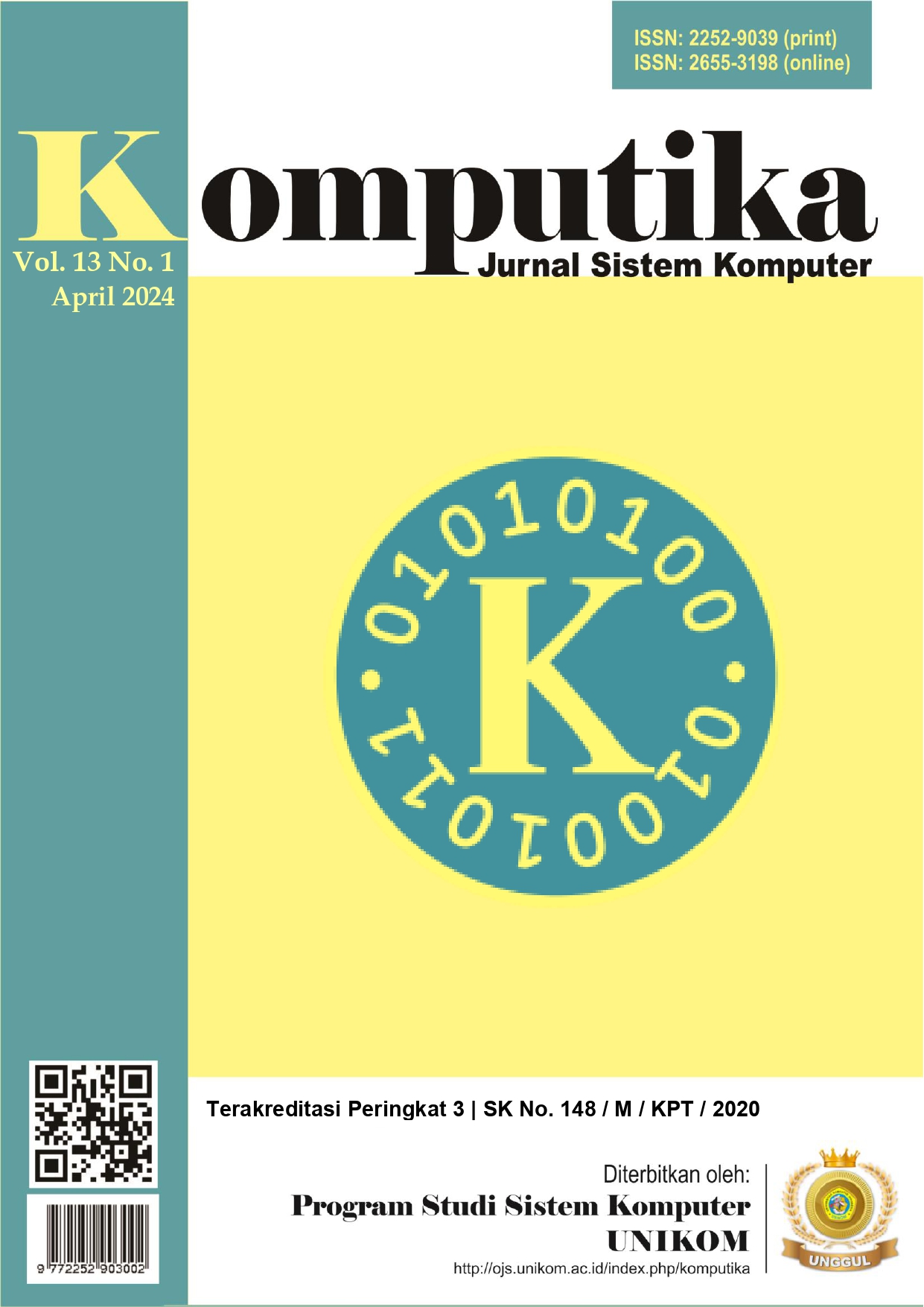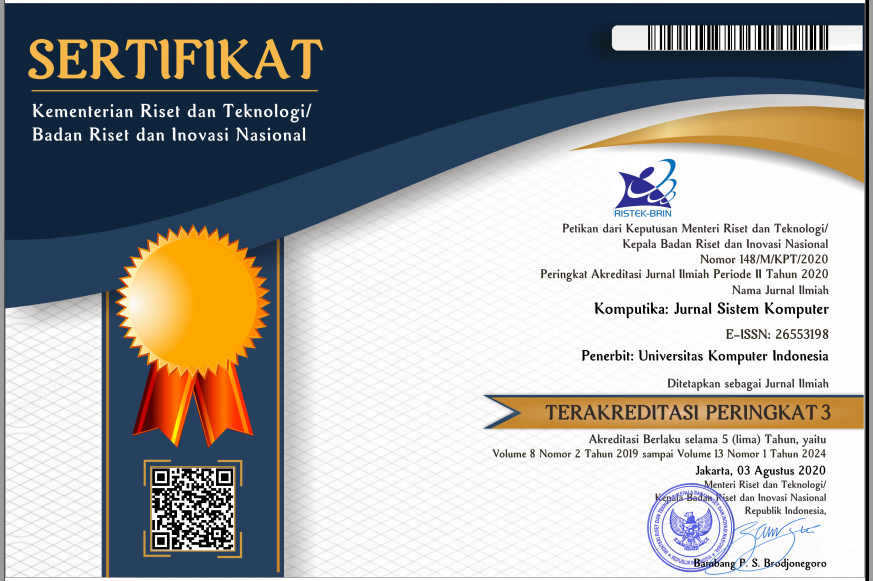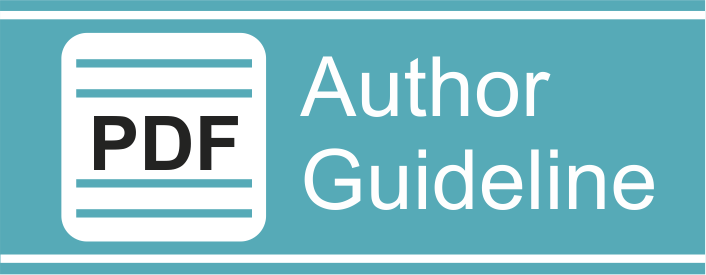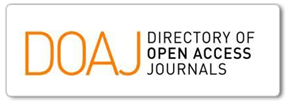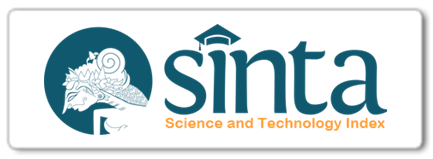Analisis Cluster Provinsi di Indonesia Berdasarkan Pertumbuhan Ekonomi Tahun 2022
DOI:
https://doi.org/10.34010/komputika.v13i1.10520Abstract
Economic development is a central agenda that aims to develop a country's economy in a sustainable manner. Indonesia's economy in 2022 grew by 5,31 percent, higher than the achievements in 2021. Therefore, considering that the economy is a very crucial sector, equitable distribution of economic growth is an important thing to pay attention to for the equal welfare of the Indonesian people. Researchers conducted an analysis related to the grouping of economic growth conditions of provinces in Indonesia in 2022 using the K-Means, K-Medoids, Hierarchical and Fuzzy C-Means Clustering. The data used are 9 variables of economic growth in 34 provinces in Indonesia in 2022. The final result was obtained by the Hierarchical Ward method with 2 cluster as the best method based on the results of internal validation and stability validation. In this method, cluster 1 is obtained totaling 28 provinces while cluster 2 totaling 6 provinces. The characteristics of cluster 1 are high economic growth seen from the variable value of factors forming high HDI but still have a high open unemployment rate, while the characteristics of cluster 2, namely low economic growth, are known from the value of the gini ratio and a high percentage of poor people.

